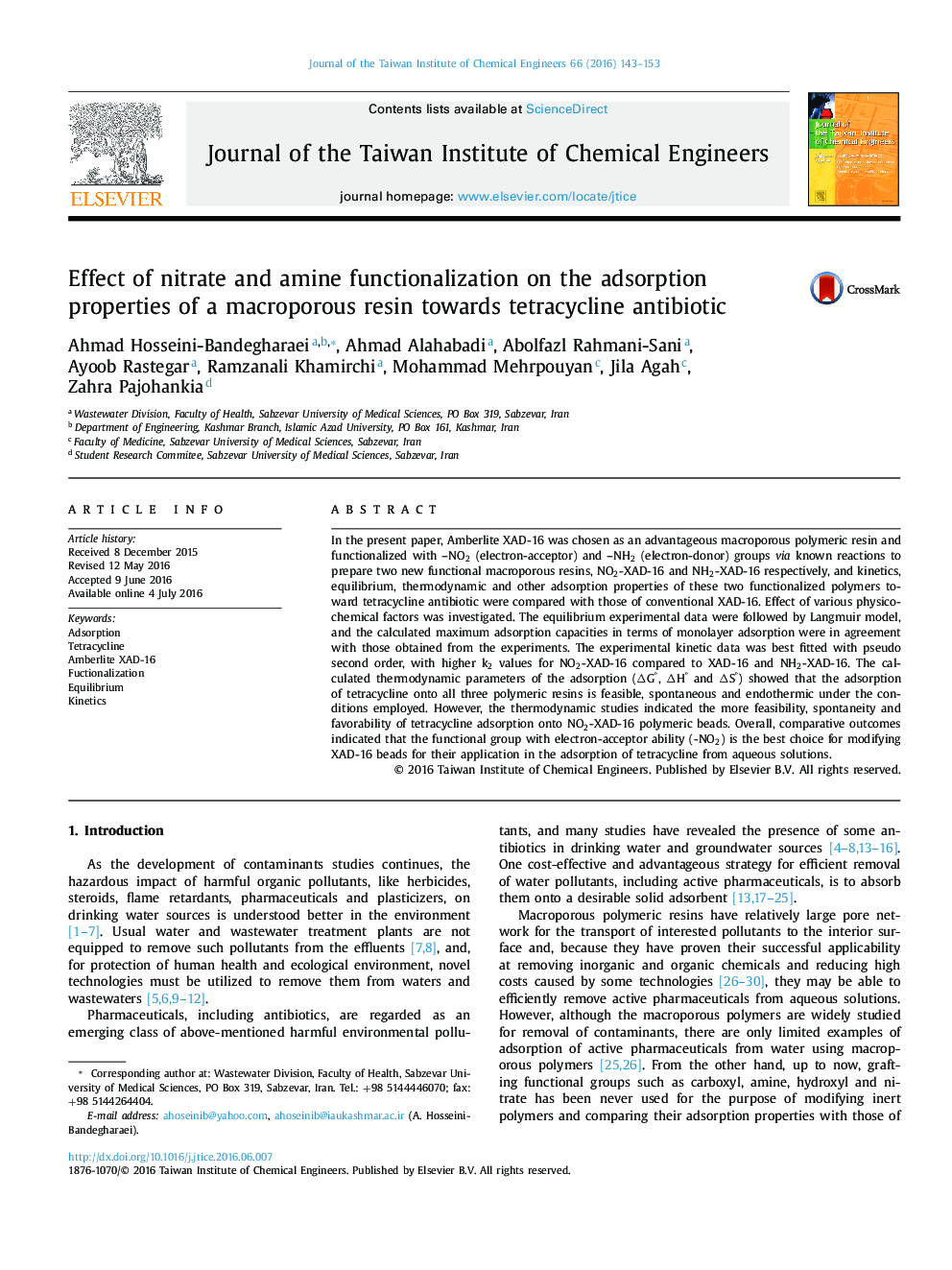| کد مقاله | کد نشریه | سال انتشار | مقاله انگلیسی | نسخه تمام متن |
|---|---|---|---|---|
| 690164 | 1460408 | 2016 | 11 صفحه PDF | دانلود رایگان |
• Amberlite XAD-16 resin was functionalized with NO2 (electron-acceptor group) and NH2 (electron-donor group) groups via known reactions.
• The adsorption properties of NO2-XAD-16 and NH2-XAD-16 resins toward tetracycline antibiotic were compared with those of conventional XAD-16.
• The results indicated that, for adsorption of tetracycline, the NO2 group is the best choice for modifying XAD-16 beads.
In the present paper, Amberlite XAD-16 was chosen as an advantageous macroporous polymeric resin and functionalized with NO2 (electron-acceptor) and NH2 (electron-donor) groups via known reactions to prepare two new functional macroporous resins, NO2-XAD-16 and NH2-XAD-16 respectively, and kinetics, equilibrium, thermodynamic and other adsorption properties of these two functionalized polymers toward tetracycline antibiotic were compared with those of conventional XAD-16. Effect of various physicochemical factors was investigated. The equilibrium experimental data were followed by Langmuir model, and the calculated maximum adsorption capacities in terms of monolayer adsorption were in agreement with those obtained from the experiments. The experimental kinetic data was best fitted with pseudo second order, with higher k2 values for NO2-XAD-16 compared to XAD-16 and NH2-XAD-16. The calculated thermodynamic parameters of the adsorption (∆Gº, ∆Hº and ∆Sº) showed that the adsorption of tetracycline onto all three polymeric resins is feasible, spontaneous and endothermic under the conditions employed. However, the thermodynamic studies indicated the more feasibility, spontaneity and favorability of tetracycline adsorption onto NO2-XAD-16 polymeric beads. Overall, comparative outcomes indicated that the functional group with electron-acceptor ability (-NO2) is the best choice for modifying XAD-16 beads for their application in the adsorption of tetracycline from aqueous solutions.
Figure optionsDownload as PowerPoint slide
Journal: Journal of the Taiwan Institute of Chemical Engineers - Volume 66, September 2016, Pages 143–153
